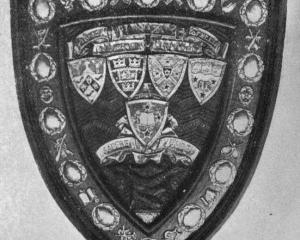As a result of his previous investigations, District Surveyor McPherson (of Southland) made a survey and report on the new pass.
The Public Works Department's district engineers (Messrs Monk and McEnnis) also visited the route during the last 12 months.
A certain sum of money was set aside by the Tourist Department for the purpose of making a track.
The first stage of this was commenced about the beginning of December.
It starts at Lake Howden and the track winds its way down into the Hollyford Valley and there follows the river to its head.
This will constitute the first stage of the journey, and it is hoped to complete this this season.
A hut will be erected at this terminus, although there is a fine bivouac at the spot.
The next stage will be over the pass into the Cleddau Valley and the final run into Milford Sound.
When the track is completed it will be possible to reach Milford Sound comfortably in five days from Wakatipu.
Good walkers could do the journey in four days. The scenery en route is varied and glorious.
The traveller passes through virgin country for nearly the whole distance.
It embraces magnificent bush, rugged mountain passes, and snowfields.
Excellent views can be obtained of the Hollyford and Cleddau Valleys and Milford Sound from either side of the pass.
The new track will not be open to the public for about two years yet.
When it is opened it will undoubtedly form a very popular route by which travellers to Milford Sound may reach Wakatipu or vice versa.
The work at present is being undertaken by five University students under Guide Lippe, formerly of Mount Cook Hermitage.
Good progress is being made by the men, and they expect to finish the first stage of the track by the end of February.
For some reason or other the rodents (mustelids) - the weasel, the stoat, and the ferret - brought into this country some years ago, for the purpose of killing out the rabbits, are viewed with a great deal of antipathy, more especially by gun men, who never miss an opportunity of shooting them whenever it offers.
Trappers, also, wage consistent warfare against them; but, in spite of these several disabilities, they appear to be increasing.
Whether they are fulfilling the purpose for which they were brought here is hard to say, but the majority of opinion is that they are not, as, if there is any feathered game or poultry in the district, they pay all their attention to them.
As an illustration, the foreman of the electric power house at the Fraser River informed an Otago Daily Times reporter last week that he had lost a whole batch of 42 chickens in one night by the depredations of stoats.
A remarkable instance of maternal devotion was brought under our reporter's notice.
It is a well-known fact that when a weasel starts to track down a rabbit it sticks unerringly to the trail of the one doomed victim - it will pass by other rabbits which may cross its path and follow on the trail of the one first selected.
This rabbit appears to realise the situation, and soon becomes paralysed with fear.
On the other hand, should a rabbit be with young and a weasel come anywhere near, the doe will at once attack it with the greatest courage, and easily put it to flight.
There are a number of weasels and rabbits round about the power house, and the sight is often witnessed of a weasel fleeing before a desperate doe which has a nest of young in the vicinity. - ODT, 22.1.1915.












